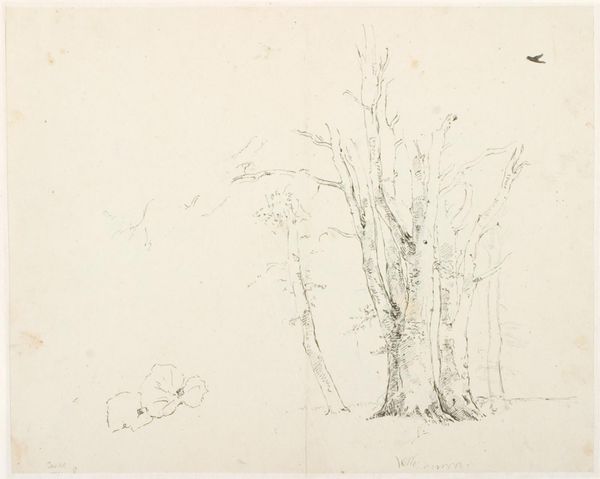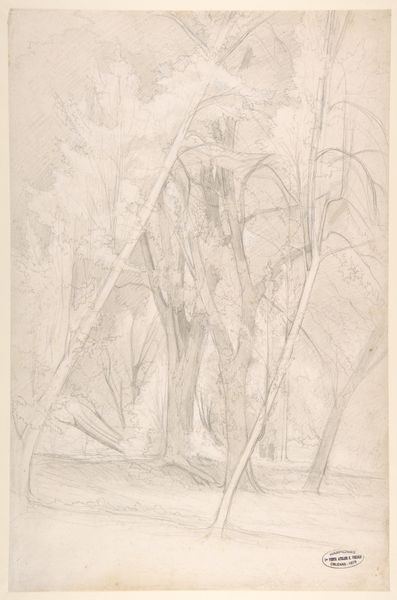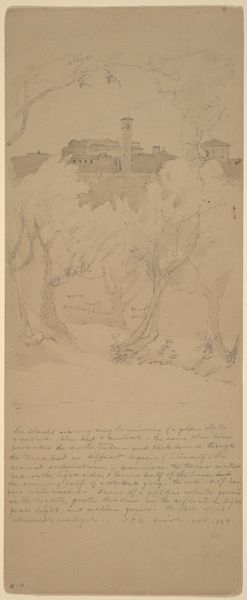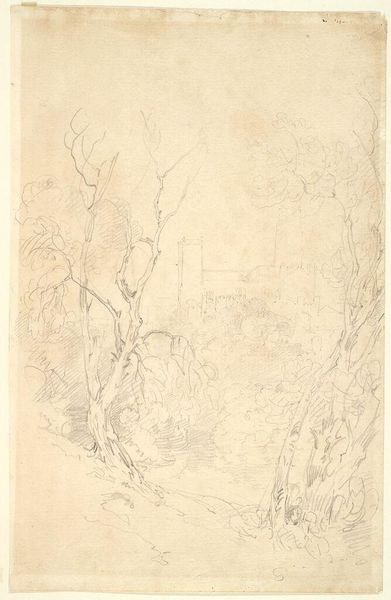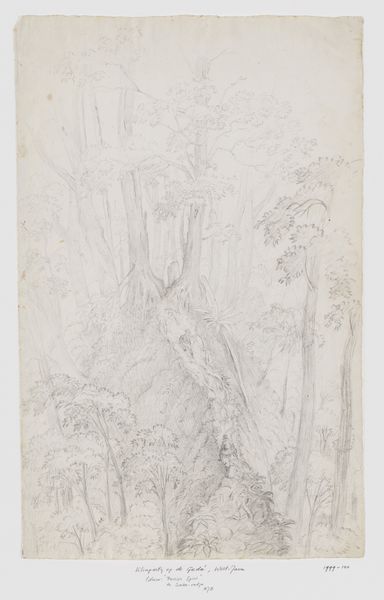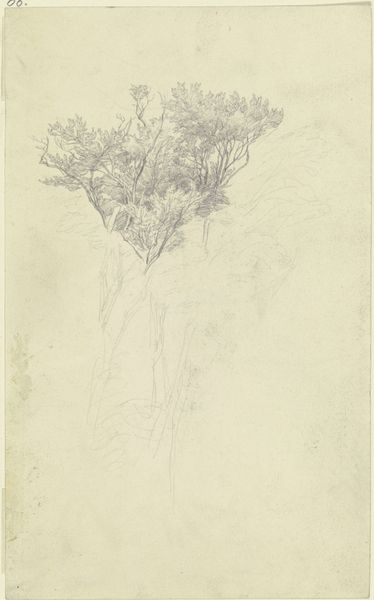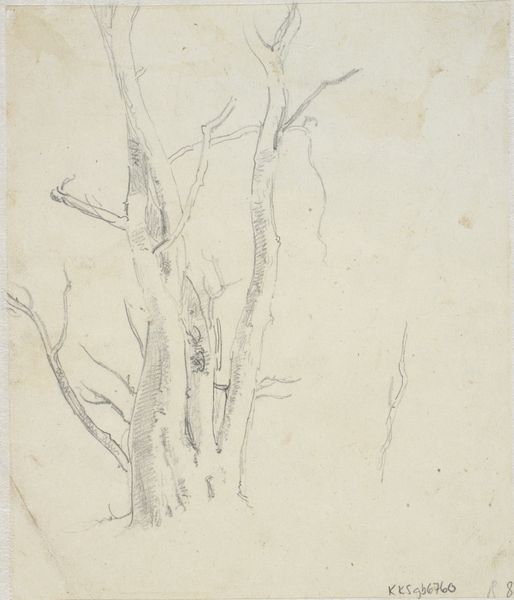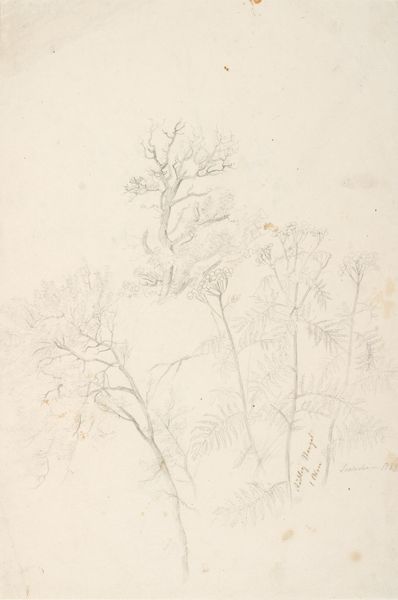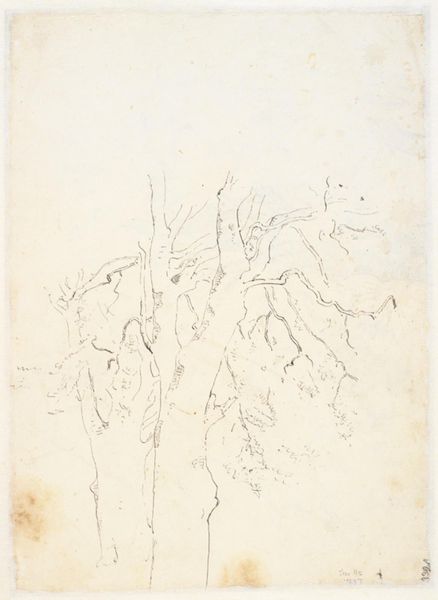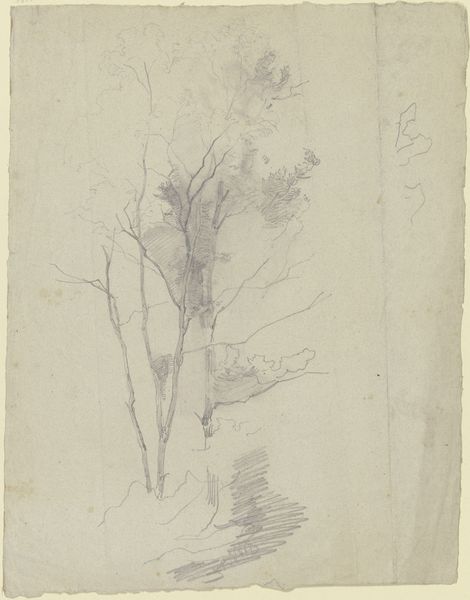
drawing, pencil
#
drawing
#
landscape
#
etching
#
pencil
#
realism
Dimensions: 245 mm (height) x 200 mm (width) (bladmaal)
Editor: This is "Studier af træstammer og planter," or "Studies of Tree Trunks and Plants" by Dankvart Dreyer, made sometime between 1831 and 1852 using pencil and drawing. The scene has a quiet, almost contemplative mood. It feels very simple and stripped down, but inviting. What do you see in this piece, something that maybe I'm missing? Curator: This drawing, to me, speaks volumes about the evolving relationship between humans and nature during the 19th century. Think about the rise of industrialization and urbanization at this time. Dreyer's choice to focus on the minutiae of the forest floor becomes almost a political act, a quiet rebellion. What do you think about that relationship? Editor: I can see that. Highlighting nature in a time of rapid industrial growth would certainly be significant. It also makes me consider accessibility; a drawing like this makes the forest more available. It preserves it for the viewer, perhaps giving reverence and highlighting the importance of the landscape and nature to their everyday lives. Curator: Exactly! And consider that access wasn’t equal. Who had the leisure to contemplate nature, and who was trapped in the factories? How does Dreyer’s detailed, almost scientific rendering of the plants contrast with the social realities of his time? Think also about gender - who was encouraged to engage with nature as a pastime, a subject for artistic pursuits? Editor: I never considered that before. So the act of even creating and studying nature was gendered. Wow! Curator: Absolutely. This drawing isn't just a depiction of plants; it's a window into the complex social, political, and gendered landscape of 19th-century Denmark. The drawing prompts us to ask, "who gets to connect with nature and why?" Editor: That's a perspective I'll carry with me. Seeing the work as a quiet resistance is powerful and encourages me to dig deeper. Curator: Exactly. Now, consider that when you encounter other landscape works. Every choice made by the artist should be further studied, questioned, and celebrated for those choices. The social is often just below the surface.
Comments
No comments
Be the first to comment and join the conversation on the ultimate creative platform.
